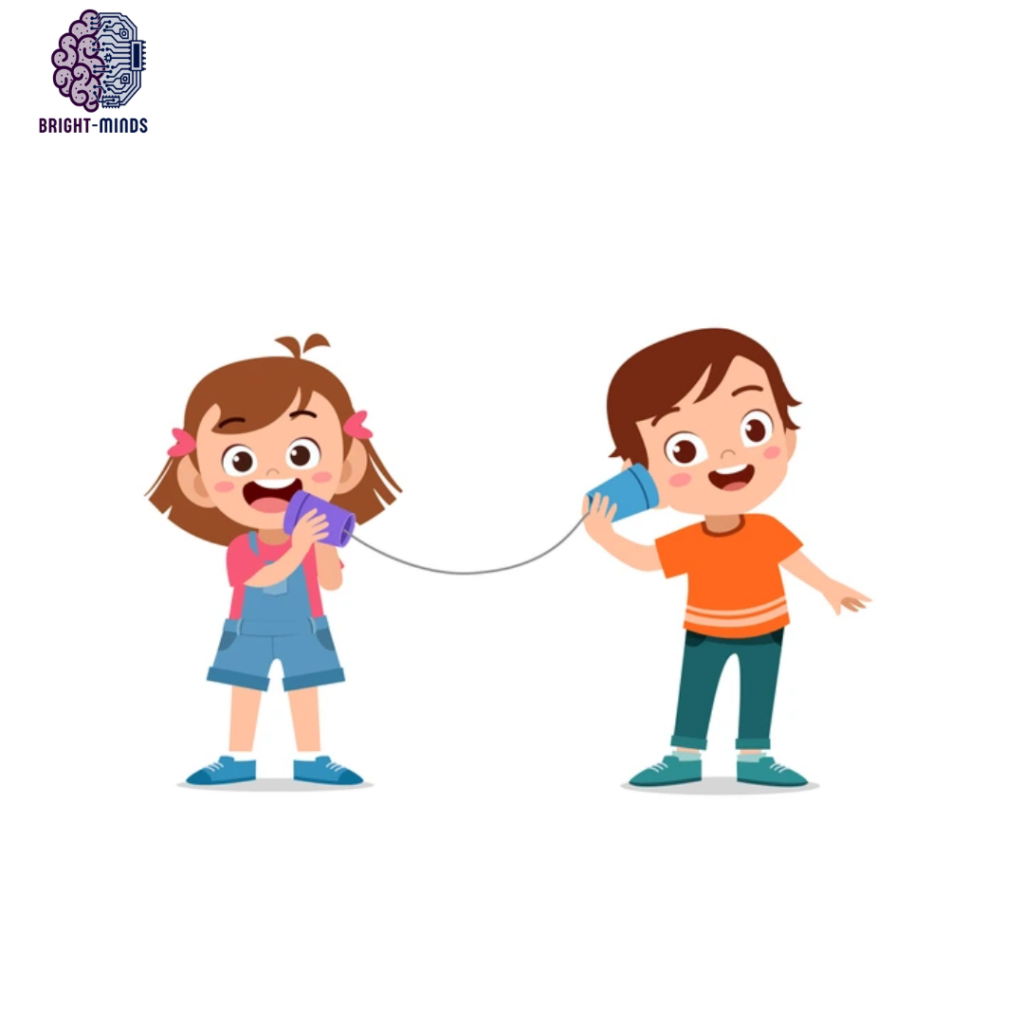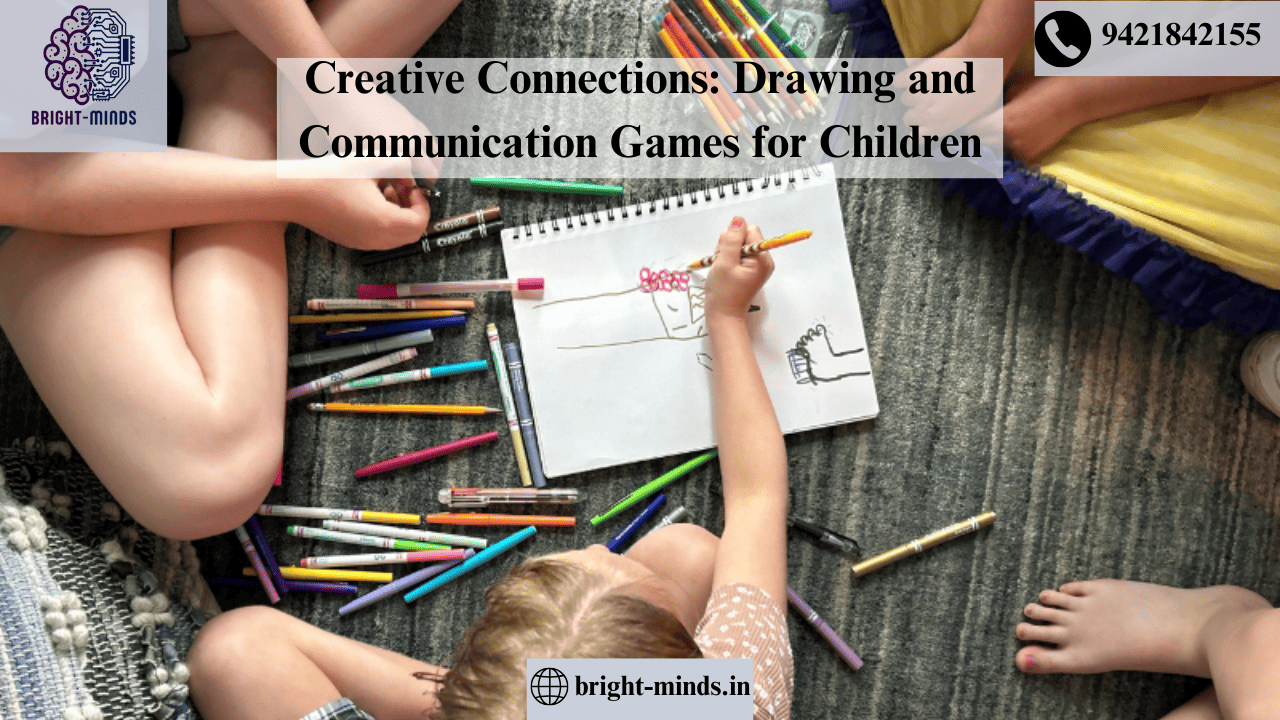Communication is a key life skill that plays a pivotal role in how children interact with the world around them. The ability to express ideas clearly and understand others’ thoughts is essential for forming relationships, excelling academically, and developing emotional intelligence. One of the most powerful and enjoyable ways for children to enhance their communication skills is through creative activities like drawing. Drawing not only allows kids to express themselves visually but also strengthens their verbal communication as they explain their artwork and share their ideas.
In this blog, we will explore a variety of fun drawing and communication games that help children build essential skills such as active listening, creativity, verbal expression, and collaboration. These games make communication fun while fostering essential skills that will help kids grow in confidence, social interactions, and problem-solving.

Why Drawing Games Are Great for Communication
Drawing is a natural and engaging activity for children. It taps into their imagination and helps them connect ideas with visual representations. When children engage in drawing-based communication games, they are given an opportunity to express themselves non-verbally while also practicing verbal skills. Here are a few reasons why drawing games are especially effective for boosting communication skills:
- Encourages creative expression: Drawing allows children to express complex ideas, emotions, and stories in a simple and fun way.
- Promotes verbal articulation: As kids explain their drawings or collaborate with others, they practice using language to describe their thoughts clearly.
- Enhances social interaction: Many drawing games involve working with others, fostering teamwork and improving social communication.
- Builds listening skills: Drawing games often require active listening, as children need to follow instructions or work together to understand the ideas being shared.
With that in mind, here are some fun and easy-to-play drawing games that will help children develop communication skills while encouraging creativity.
1. Draw and Tell
“Draw and Tell” is a fantastic game that encourages children to articulate their thoughts and ideas while drawing. This game builds their verbal communication skills by having them describe their drawings to others, helping them practice clear and confident speech.
How to Play:
- Provide each child with a piece of paper and some crayons or markers.
- Ask the children to draw something based on a theme, such as “A day at the beach” or “My favorite animal.”
- Once everyone has finished their drawings, ask each child to present their picture to the group and explain what they drew and why.
- Encourage them to use descriptive language and tell a story about their drawing.
Benefits:
- Promotes creativity while helping children articulate their ideas.
- Boosts confidence in speaking in front of others.
- Helps children practice describing details and telling stories.
2. Pictionary
Pictionary is a classic drawing game that combines creativity and communication. This fun activity helps children practice both verbal and non-verbal communication as they convey words or phrases through drawings.
How to Play:
- Divide the children into two teams.
- One player from a team selects a word or phrase from a list and draws it on a whiteboard or large paper without using any letters or numbers.
- The other team members have to guess what the drawing represents within a time limit.
- After each turn, swap teams, and continue until all words or phrases have been guessed.
Benefits:
- Encourages clear communication and teamwork.
- Develops both verbal and visual communication skills.
- Helps children understand how to represent ideas non-verbally.
3. Collaborative Art Project
A collaborative art project is an excellent way to encourage teamwork, active listening, and effective communication. Working together to create a piece of art allows children to practice expressing their ideas and listening to others’ opinions.
How to Play:
- Provide a large piece of paper or canvas and a variety of art supplies.
- Each child will contribute to the artwork by adding a section or specific element, like drawing a tree, a house, or a person.
- As children work, encourage them to discuss their ideas with each other and negotiate how the artwork will come together.
- Once the project is complete, allow the group to present and explain their collaborative work.
Benefits:
- Fosters teamwork and collaboration.
- Encourages children to express their ideas visually and verbally.
- Helps children practice giving and receiving constructive feedback.
4. Picture Telephone
Picture Telephone is a fun and engaging drawing game that combines creativity, listening, and communication. This game requires kids to pay attention to details and accurately convey ideas to others through drawings.
How to Play:
- Have the children sit in a circle.
- The first child thinks of a sentence and draws a picture to represent it. For example, “A dog chasing a ball.”
- The second child sees the picture, but not the original sentence, and draws their interpretation of it.
- This continues around the circle, with each child drawing what they think the previous picture represents.
- At the end of the round, the last child says what they think the original sentence was, and the group compares it with the first drawing.
Benefits:
- Enhances listening skills and attention to detail.
- Encourages creative thinking and interpretation.
- Helps children understand how communication can change as it’s passed along.
5. Shape Storytelling
Shape Storytelling is a creative drawing game that encourages children to use shapes to tell a story. This game helps them practice thinking outside the box and using language to describe abstract ideas.
How to Play:
- Give each child a set of basic shapes (circles, squares, triangles, etc.).
- Ask them to create a picture or story using only these shapes. For example, a square might be a house, a circle could be a sun, and a triangle might represent a mountain.
- Once they’ve finished their drawings, have the children tell a story based on the shapes they used.
- Encourage them to describe their story with details and use language to bring their shapes to life.
Benefits:
- Stimulates creativity and imagination.
- Encourages storytelling and verbal communication.
- Teaches children how to use shapes and symbols to represent ideas.
6. Emotion Drawings
This activity helps children express their emotions and practice talking about feelings. Drawing can be a great way to encourage emotional communication and help children understand how they feel.
How to Play:
- Ask each child to draw an image that represents an emotion, such as happiness, sadness, or anger.
- Once they have finished their drawing, ask them to explain why they chose that emotion and how it feels.
- Encourage the children to talk about times when they have felt that emotion and how they express it in real life.
Benefits:
- Promotes emotional awareness and expression.
- Helps children build vocabulary related to emotions.
- Encourages verbal communication and reflection on feelings.
7. Guess the Object
“Guess the Object” is a fun game where one child draws an object, and the others have to guess what it is. This game improves both descriptive language and listening skills.
How to Play:
- One child is given a specific object or item to draw (such as a tree, car, or house).
- The child has to draw the object without using any letters or numbers.
- The other children try to guess what the object is based on the drawing.
- After the object is guessed, discuss how the drawing could have been improved to make it easier to recognize.
Benefits:
- Enhances descriptive and verbal communication skills.
- Improves the ability to observe and recognize details.
- Encourages children to think critically and describe things clearly.
8. Drawing Charades
Drawing Charades is a twist on the classic game of charades, where kids communicate through drawings instead of acting. This game helps children think creatively and practice using visual cues to express ideas.
How to Play:
- Write a list of objects, animals, or activities on pieces of paper.
- One child selects a piece of paper and draws the object or activity without speaking.
- The rest of the group tries to guess what is being drawn.
- After the guess is made, the next child takes their turn.
Benefits:
- Encourages creative thinking and clear communication.
- Builds teamwork and collaboration as children work together to guess the drawings.
- Enhances both verbal and non-verbal communication skills.
Conclusion
Drawing and communication games are an excellent way to help children develop their ability to express themselves, both visually and verbally. These games encourage creativity, active listening, and clear articulation, all of which are essential components of effective communication. By incorporating drawing activities into your child’s routine, you can foster a love for both art and language, helping them grow into confident, expressive individuals. Whether it’s through collaborative art projects, storytelling with shapes, or fun games like Pictionary, these activities provide an enjoyable and supportive environment for developing communication skills.
Also Read:
https://bright-minds.in/unlocking-word-meaning-for-class-ukg-english-to-hindi/

